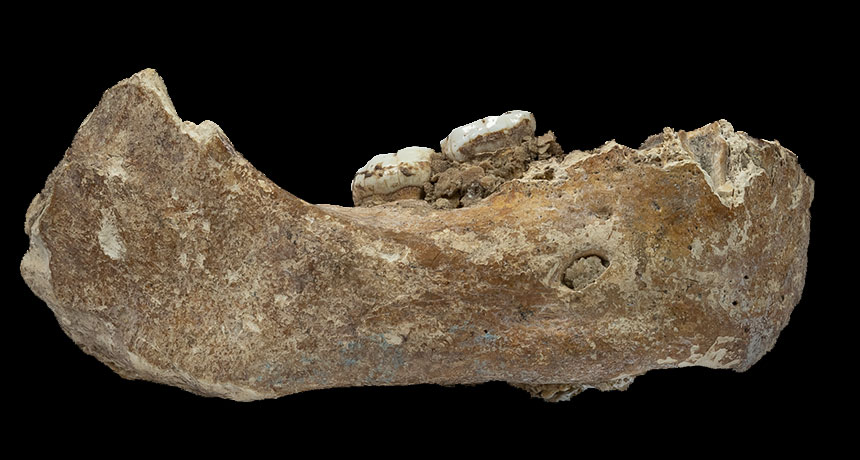
(TibetanReview.net, May04’19) – A lineage of prehistoric relatives of modern humans had lived on the Tibetan Plateau around 160,000 years ago. The finding was reported by Chinese and overseas researchers following the discovery of a lower jaw in a cave in the Xiahe (Tibetan: Sangchu) County of what is now part of China’s Gansu Province.
The discovery was made in the Baishiya Karst Cave, a holy location where Tibetans have long retreated to pray and heal from sickness, in 1980. A local monk happened on something unexpected during one of his visits to the cave: a jaw with two huge teeth that, while human, was definitely not like that of humans today, noted nationalgeographic.com May 1.

The report said a detailed analysis of its physical features as well as proteins extracted from the fossil suggested that the lower jawbone, dated to 160,000 years ago, had come from the enigmatic human population known as the Denisovans—a sister group to the Neanderthals previously identified from scant remains found in a single cave in Siberia’s Altai Mountains.
Denisovans are a new kind of hominin, a lineage separate from Neanderthals and Homo sapiens, noted sciencefriday.com May 3. They shared a common ancestor with the Neanderthals and interbred with them as well as Homo sapiens. They are an extinct sister group to Neanderthals, known only from fossil fragments previously found at Denisova cave in Russia.
The nationalgeographic.com report said that while the previous Denisovan fragments had come only from the eponymous Denisova Cave in Siberia, people living all across Asia and Australasia today carry Denisovan DNA in their genomes. So, the discovery of the Xiahe jawbone at a locale over 1,400 miles away from this Siberian cave confirmed that the Denisovans had ventured much further across the continent.

It is believed that after the Denisovans’ ancestors split from their Neanderthal relatives at least 400,000 years ago, they headed east into Asia, while early Neanderthals spread through Europe and western Asia.
Modern humans first left Africa some 200,000 years ago, first as a trickle and then in waves. Eventually they encountered and interbred with Neanderthals in the Middle East. Those who trekked east into Asia likewise mated with the resident Denisovans, who left genetic fingerprints still present in Asians today.
The find may point to the source of genetic adaptations that some modern people have for high-altitude living, said the sciencefriday.com report.
A team led by researchers from the Chinese Academy of Sciences, Lanzhou University, and the Max Planck Institute for Evolutionary Anthropology (MPI-EVA), based in Leipzig, Germany, found that the lawbone’s owner belonged to a population that was closely related to the Denisovans.
These ancient hominins occupied the plateau in the Middle Pleistocene and “successfully adapted to high-altitude low-oxygen environments long before the regional arrival of modern Homo sapiens”, China’s official Xinhua news agency May 2 quoted Zhang Dongju, one of the authors of the study, as saying.






